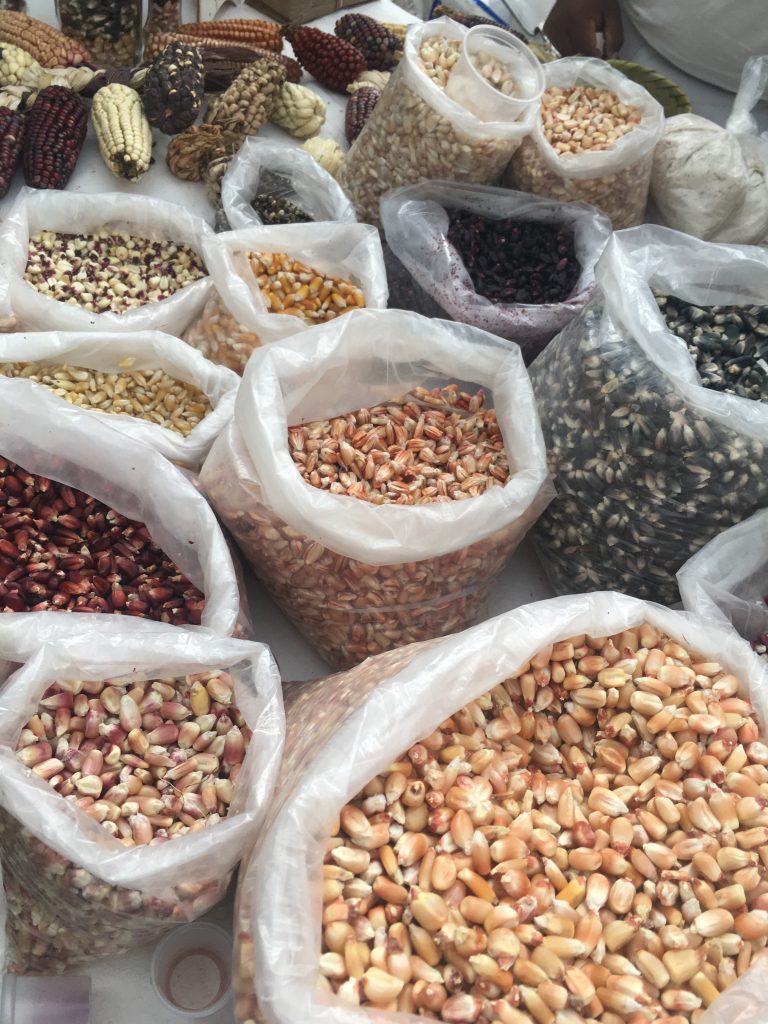Luis Hernández Navarro

The United States is the world’s largest producer, consumer and exporter of corn. But its crops are used to feed livestock and automobiles, manufacture high fructose sweeteners, snacks, alcohols, oils and, marginally, for people to eat. About 60 percent of local consumption of the grain goes to industrial uses, most significantly to ethanol production. The crop is a business, not part of their culture.
Although corn is grown almost everywhere in the United States, mainly with genetically modified seeds, its production is concentrated in the corn belt states, which include Iowa, Illinois, Indiana, Nebraska, Kansas, Minnesota and Missouri. In many of these states, the main political force is the Republican Party. For the most part, it is grown on highly mechanized ranches of more than 500 hectares. The number of family farmers engaged in this activity is decreasing every year.
This cereal is the agricultural product to which Washington allocates the most subsidies. In 2019, it received 2.2 billion dollars (https://rb.gy/bqbp38). These benefit large agribusiness companies more than producers, and large farmers over small family farmers. As Ana de Ita demonstrated since 1997, in the book Mirage and Reality: NAFTA three years later, coordinated by Andrés Peñaloza and Alberto Arroyo, these subsidies are a real dumping mechanism affecting Mexican peasants and farmers.
The US exports between 10 and 20 percent of the total volume of its subsidized production to countries such as Mexico, China, Japan and Colombia. In order to place its grain in other countries without restrictions, it pressures/negotiates access to their markets and the dismantling of sovereign protections through free trade agreements. This is what it did with Mexico, first with NAFTA and now with USMCA (T-MEC). It competes with Brazil, Argentina and Ukraine, which have increased their presence in the world grain market.
Uncle Sam’s agricultural exports are not just a business. They go beyond that. Food production is a key and powerful weapon that he has been oiling for decades. As Peter Rosset has pointed out, war, food and intellectual property rights have been closely linked to White House economic strategy since the 1970s. Military industrial development, massive grain production and patents have been pillars of U.S. hegemony in the world economy. Food is an instrument of imperial pressure.
By confession, the proof is in the pudding. John Block, Secretary of Agriculture from 1981 to 1985, stated: “The effort by some developing countries to become self-sufficient in food production must be a memory of times past. These countries could save money by importing food from the United States.” Agricultural products made in the USA are one of that country’s main export commodities. With its domestic market saturated, it is pushing aggressively to open the borders to its agri-food products.
President George W. Bush reaffirmed this when he signed the Farm Security and Rural Investment Act of 2002: “Americans can’t eat everything the nation’s farmers and ranchers produce. That’s why it makes sense to export more food. Today 25 percent of U.S. farm income comes from exports, which means access to foreign markets is crucial to the survival of our farmers and ranchers. Let me put it as simply as I can: we want to sell our cattle, corn and beans to people around the world who need to eat.”
President George W. Bush reaffirmed this when he signed the Farm Security and Rural Investment Act of 2002: Americans can’t eat everything the nation’s farmers and ranchers produce. That’s why it makes sense to export more food. Today 25 percent of U.S. farm income comes from exports, which means access to foreign markets is crucial to the survival of our farmers and ranchers. Let me put it as simply as I can: we want to sell our cattle, corn and beans to people around the world who need to eat.
At the end of this year, the new Farm Bill, the Five-Year Plan that regulates the agricultural policies of the northern neighbor, will have to be approved. In the discussion, Uncle Sam’s interest in continuing to make food a weapon for controlling other nations and a big business, the votes of the corn belt farmers and the interests of the large agribusinesses are all mixed up. In the midst of this debate, Mexico’s February 14 decree banning the use of genetically modified corn for human consumption in masa (the dough of ground corn) and tortillas fell like a bombshell. Immediately, interests moved to put pressure on Mexico.

According to Tom Haag, president of the National Corn Growers Association, “the Biden administration has been more than patient with Mexico, as U.S. officials have tried to enforce a rules-based trading system and defend U.S. farmers.” Now, he added, “the integrity of the USMCA, signed by Mexico’s own President Andrés Manuel López Obrador, is at stake. Giving special attention to corn, our number one agricultural export to Mexico, and rushing through a ban on imports of numerous types of food categories, makes the USMCA a dead letter unless it is enforced.”
Neil Caskey, vice president of that association, went further: “We have always believed that this would ultimately be resolved through the dispute settlement process of the U.S.-Mexico-Canada agreement. Today we are urging the administration to begin that process immediately.”
The corn war between the U.S. and Mexico has escalated. Unless the grain becomes a bargaining chip in other major negotiations, what is at stake today is the real margin our country has for a policy of food self-sufficiency under the USMCA.
This article was published in La Jornada on February 21st, 2023. https://www.jornada.com.mx/2023/02/21/opinion/014a2pol
English translation by Schools for Chiapas.
